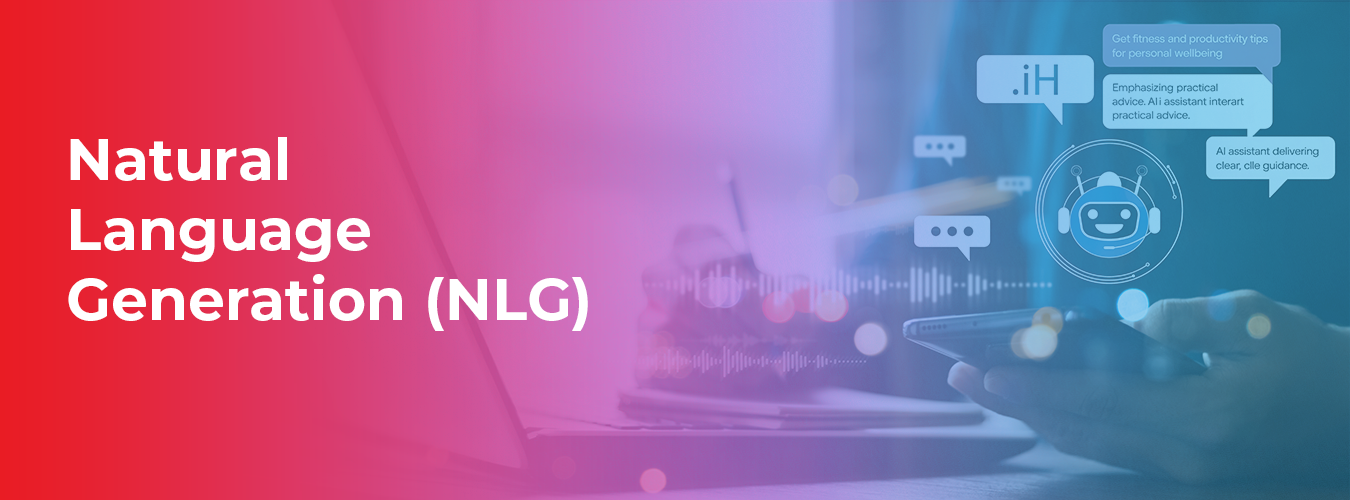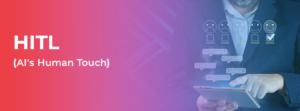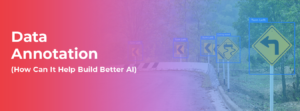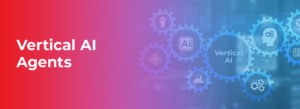Natural Language Generation (NLG): The Future of AI-Powered Text
The ability to generate human-like text from data is not just a sci-fi dream—it’s the backbone of many tools we use today, from chatbots to automated reporting systems. This revolution in artificial intelligence has a name: Natural Language Generation (NLG).
If you’re an AI enthusiast or a tech professional, understanding NLG is essential for keeping up with the technologies shaping the future of communication, automation, and business operations. This blog will cover what NLG is, how it works, its benefits, and where it can be applied. You’ll leave with actionable insights into how you can leverage NLG—powered by Macgence data training models!
What is Natural Language Generation (NLG)?
‘‘Natural Language Generation“ (NLG) is a subfield of artificial intelligence known as Natural Language Processing (NLP). Unlike NLP, which helps in understanding language, NLG generates content that makes sense in a human context. NLG generates human sounding text from data that can be put in a table or chart, rather than prose.’’
From automating decision making to enhancing the customer experience, NLG has a profound impact everywhere. Using AI, businesses can effortlessly and uniformly construct automated texts from data, relieving them from monotonous report crafting.
What is the Relationship Between NLG, NLP, and NLU?
Examining NLG involves looking at it alongside Natural Language Processing (NLP) and Natural Language Understanding (NLU):
- NLP (Natural Language Processing): Encompasses the understanding, and the generation of human language by AI, so it is an umbrella term.
- NLU (Natural Language Understanding): Concentrates on interpreting the language and its meaning.
- NLG (Natural Language Generation): Takes data, analyzes it, interprets it and outputs it into natural human speech or writing.
An illustration may clarify this. NLU helps a chatbot understand what a customer wants, and NLG enables the chatbot to articulate a fitting reply, blending both techniques.’’
How Does NLG Work?
NLG is a multi-stage process consisting of several complex steps. Each stage refines the input data and prepares it for coherent, grammatically correct text output:
- Content Analysis: Understanding the data and selecting relevant information to be included in the generated content.
- Data Understanding: Identifying patterns and putting data into context using machine learning techniques.
- Document Structuring: Creating a narrative structure or “skeleton” for the document, depending on the type of data.
- Sentence Aggregation: Combining sentences or parts of sentences to summarize key points effectively.
- Grammatical Structuring: Applying grammatical rules to create fluent and grammatically accurate sentences.
- Language Presentation: Formatting the finalized text to match the intended tone, style, or template.
Key Methodologies in NLG
NLG systems employ various AI methods to generate content, such as:
- Markov Chains: Useful for generating probabilistic models of text sequences.
- Recurrent Neural Networks (RNN): Ensures fluidity in sentence structures.
- Long Short-Term Memory Networks (LSTM): Helps retain contextual information for better text consistency.
- Transformer Models: Cutting-edge models like GPT utilize Transformers for high accuracy and coherence in content.
Benefits of Using NLG
The implementation of NLG offers several key advantages to businesses and organizations:
1. Increased Efficiency
By automating content creation, NLG saves countless hours for professionals. Tasks like report generation or product descriptions—which often take hours to write—can now be completed in seconds.
2. Improved Accuracy
NLG eliminates human errors typically associated with manual data transcription or repetitive writing tasks. This ensures your output is consistently flawless.
3. Enhanced Personalization
A significant advantage of NLG lies in its ability to craft tailored messages based on customer data. This leads to highly personalized communication at scale, creating a stronger connection with users.
Applications of NLG
NLG is already driving innovation in several industries. Here’s how businesses are leveraging this technology:
1. Chatbots and Virtual Assistants
Virtual assistants like Siri and Alexa rely on NLG to provide human-like responses. NLG enables chatbots to generate natural, conversational replies, enriching customer support processes.
2. Automated Reporting
Organizations use NLG to turn raw data into comprehensive reports. For example, a financial firm might summarize stock market trends for its investors using AI.
3. Content Creation and Marketing
Marketers are using NLG for scalable content generation, whether it’s creating product descriptions, blog posts, or personalized email campaigns.
4. Finance and Investments
NLG helps financial institutions draft reports, summaries, and client communications about market data and analytics—saving time and reducing errors in analysis.
5. Medical Records
Healthcare providers use NLG to convert clinical data into reports or patient summaries, fostering better understanding and improved care.
6. E-learning
E-learning platforms use NLG to create lesson content, quizzes, and progress summaries personalized to each student’s learning path.
Examples of NLG Models
Several advanced NLG models fuel modern AI applications. Some of the most prominent models include:
- GPT (Generative Pre-trained Transformer): Developed by OpenAI, GPT excels at generating human-like and contextually relevant text.
- BERT (Bidirectional Encoder Representations from Transformers): Another NLP powerhouse that aids in understanding context, making it useful for language synthesis.
- XLNet: This advanced model improves upon BERT with greater accuracy and coherence in text generation.
A Look Ahead at NLG’s Future
Natural Language Generation is reshaping the way industries function, but this is only the beginning. Future trends in NLG include:
- Enhanced emotional intelligence, allowing systems to mimic empathy in conversations.
- Multilingual NLG, breaking language barriers for global applications.
- Greater integration with other AI technologies, such as vision and robotics.
Macgence, a leading data provider powering the training of AI and ML models, is at the forefront of enabling organizations to adopt cutting-edge NLG solutions. NLG holds immense potential, and its future shines brighter than ever.
Unlock the Potential of NLG with Macgence
Advancements in Natural Language Processing for business purposes has gone beyond having to luxury as now it has become a requirement to stay competitive in today’s world. NLG or Natural Language Generation expands windows to improve efficiency and precision which is crucial for a business looking for automation or a tech individual aiming to explore new AI frontiers.
For those eager to learn about the world of NLG and seeking revolutionary possibilities for their firm, connect with Macgence’s AI model training datasets today!
FAQs
NLP relates to understanding and working on human language. NLG has a much narrower scope which is about generating text that a human would write based on the underlying data.
NLG is particularly useful in automation, operational efficiency, and personalization in finance, healthcare, customer service, and marketing.
You must first figure out what data along with text tasks you have that need to be automated. Then purchase NLG software or collaborate with Macgence who can build the proper models for your organization.
You Might Like
February 28, 2025
Project EKA – Driving the Future of AI in India
Artificial Intelligence (AI) has long been heralded as the driving force behind global technological revolutions. But what happens when AI isn’t tailored to the needs of its diverse users? Project EKA is answering that question in India. This groundbreaking initiative aims to redefine the AI landscape, bridging the gap between India’s cultural, linguistic, and socio-economic […]
March 24, 2025
HITL (Human-in-the-Loop): A Comprehensive Guide to AI’s Human Touch
The integration of Artificial Intelligence (AI) in various industries has revolutionized how businesses operate. However, AI is not infallible, and many applications still require human intervention to enhance accuracy, efficiency, and reliability. This is where the concept of Human-in-the-Loop (HITL) becomes essential. HITL is an AI training and decision-making approach where humans are actively involved […]
March 7, 2025
Data Annotation – And How Can It Build Better AI in 2025
In the world of digitalized artificial intelligence (AI) and machine learning (ML), data is the core base of innovation. However, raw data alone is not sufficient to train accurate AI models. That’s why data annotations comes forward to resolve this. It is a fundamental process that helps machines to understand and interpret real-world data. By […]
March 6, 2025
Vertical AI Agents: Redefining Business Efficiency and Innovation
The pace of industry activity is being altered by the evolution of AI technology. Its most recent advancement represents yet another level in Vertical AI systems. This is a cross discipline form of AI strategy that aims to improve automation in decision making and task optimization by heuristically solving all encompassing problems within a domain. […]


 Previous Blog
Previous Blog







